How to plant a rosehip and organize its care on your site
Among other shrubs, rose hips are very popular with gardeners, and planting them on the site and caring for the plant will provide a whole range of vitamins and minerals for the whole family. Thanks to its beautiful fragrant flowers, the plant is widely used for garden decoration. And the sharp thorns on the branches of the bushes planted in a row will provide an impenetrable hedge.
In the wild, a perennial shrub of the Pink family is often found on river banks and on the slopes of ravines; it can be seen in forest glades and forest edges. Many cultivated varieties of wild roses are successfully grown by professionals and amateurs for decorating parks, gardens and adjoining territories.
Seat selection
The plant's ability to tolerate drought and frost well allows it to be used to strengthen the soil along ravines or streams. Planting rose hips along the perimeter of the site is carried out to create a thorny hedge. Some types of rose hips are placed to decorate outbuildings or unsightly compost heaps.
Advice
If the rose hips are grown for useful fruits, then different plant varieties should be planted next to each other, giving them the opportunity to pollinate. A singly planted bush will serve solely for decorative purposes.
The powerful root system of the plant is capable of spreading out to the sides rather quickly, growing by underground shoots in the upper layers of the soil. You can stop the spread by protecting the bushes with slate scraps dug into the ground to a depth of 20-30 cm.
When choosing a place for planting a perennial, it is necessary to be guided not only by the aesthetic features of the plant. For the normal development and fruiting of an unpretentious shrub, certain conditions will still be required:
- sunlit area;
- fertile loamy or slightly acidic soil;
- lack of groundwater.
Placing shrubs in low wetlands will kill the plant.
Planting a plant
Rosehips should be planted in the spring or autumn season in the soil prepared in advance. To do this, the site is being digged with the simultaneous introduction of a bucket of compost, 40 g of superphosphate and 20 g of potassium salt per square meter.
Advice
Before planting, the roots of the rose hips should be dipped in a mash made from clay and manure.
One-year or two-year-old seedlings are placed in a 40x40 cm planting hole, placing them at a distance of a meter. Before planting, you should carefully examine and straighten the roots, if necessary, remove the damaged areas. A seedling is placed on a hill prepared at the bottom of the hole from the soil, carefully straightening the roots. Gently sprinkle with a fertile substrate, gradually compacting it around the plant. After planting, the ground is watered and mulched with compost, peat or rotted sawdust.
The seedlings must be watered regularly, the soil around the plant must be loosened and weeded. In early spring, each young bush should have its stem cut off, leaving three buds above the ground.
Rosehip care
To increase yields and improve the quality of fruits, you should properly care for the plant during the growing season.
- Watering
Adult plants are watered 3-4 times per season, 2-3 buckets under a bush. During the fruiting period, the volume of liquid increases to 5 buckets.
- Loosening
It is recommended to loosen the soil around the plant periodically to increase oxygen access to the root system and retain moisture in the ground, while simultaneously removing weeds.
- Pruning
In the fall or spring, before bud break, it is recommended to remove all diseased, withered, weak branches pressed to the ground. Shorten healthy ones, leaving 60-70 cm. A three-year-old plant leaves 5 of the strongest and most powerful shoots. Subsequently, it is necessary to carry out annual pruning, adding 5 branches each. An adult bush should be formed from 18-20 strong shoots.
A rosehip that has reached the age of six begins to bear fewer fruits, so it is recommended to remove all old branches to rejuvenate the perennial. The procedure should be carried out in the spring, giving the plant the opportunity to recover in summer. Young strong offspring will start growing right from the roots. Autumn pruning of the shoots coming from the roots can adversely affect the further development of the bush.
Advice
It is necessary to cut off old branches at the very base. Shortening the shoots will only lead to the appearance of shoots.
Long-handled pruning shears are recommended for pruning rose hips. This will allow you to reach the most inaccessible places without injuring your hands on the thorny branches.
- Preparing for winter
A frost-resistant plant does not require additional shelter for the winter. You can cover young seedlings of some decorative varieties from frost. To protect the bushes, it is necessary to insulate the near-trunk circle with the help of mulching materials - fallen leaves of wood, straw. Wrap the bush itself with burlap or non-woven covering material.
- Top dressing
Young plants need organic matter, which is introduced under the bush in early spring, the wild rose is fertilized again during the period of active growth of shoots, the last feeding is carried out in September.
Starting from the fourth year of the development of rose hips, in the process of spring digging, 3 kg of humus or compost are introduced under each bush. In September, 1 sq. m. add 30-40 g of superphosphate and feed 15-20 g of potassium salt.
Each top dressing should be accompanied by subsequent watering and loosening of the earth.
Seed propagation
A simple way of propagating a perennial with seeds takes quite a long time.
Planting material can be purchased at garden stores. When self-harvesting seeds, you must choose immature fruits that have an unsaturated red color. In this case, seed germination will be quite high.
- In autumn, in the open field, grooves are made 2 cm deep and wild rose seeds are placed in them.
- Crops should be mulched with humus or compost.
- In the spring, it is recommended to cover the bed with a polyethylene film stretched over the frame. The first shoots will quickly appear in the warm soil. With the onset of heat, the film must be removed.
- The appearance of three true leaves on the seedlings is a signal for picking plants.
Subsequent care of the seedlings consists of watering, loosening and weeding with periodic fertilization.
Reproduction by layering
For plant propagation, arcuate and horizontal layering of rose hips are used.
- In the spring, arcuate shoots are chosen and fixed with pins in specially prepared holes. The buried stems are mulched with loose fertile soil, periodically increasing its layer to form adventitious roots.
- To improve the amount of planting material, horizontal layers can be used. Humus is laid in the furrows with the addition of organic and mineral fertilizers. A horizontally growing strong branch of the plant is placed in the soil for the entire length of the shoot and covered with a layer of fertile substrate. With properly organized watering and regular hilling, active growth of shoots will begin during the summer. By the fall, each of them will have formed their own root system. After a year, you can divide the layers and transplant them for independent development.
When choosing a method of propagation by layering, it is necessary to outline the most powerful and productive bush.
Propagation by cuttings
Propagation of a wild rose by cuttings is advisable in late June or early July.
- Shoots with leaves are cut from a bush pre-selected for reproduction.
- Cuttings with a sharp knife or secateurs must be divided into parts, each of which must have at least three nodes. A straight upper cut is made 1 cm above the knot, the lower cut of the cutting is made at an angle of 45 degrees.
- The bottom sheet must be removed along with the petiole, the rest must be cut in half.
- Place the cuttings treated with a growth stimulating agent in a substrate of a mixture of sand and peat in proportions of 3: 1.
- Obliquely planted petioles must be watered and sprayed regularly. It is more convenient to maintain moisture when growing plants in greenhouses.
- After a month, when the petioles take root, the frequency of watering should be reduced.
- It is necessary to promptly remove fallen leaves and loosen the soil.
Planting seedlings in a place of permanent growth is carried out in October or November. Preservation of an earthen coma during transplantation contributes to better plant survival. The root neck of the dog rose should be buried 4-5 cm.
Reproduction by dividing the bush
A perennial that has reached the age of six is dug up and, shaking off the excess land, is divided into parts. The resulting bushes are planted in pits prepared in advance.
Harvesting
Rosehip berries are harvested as they ripen, in stages from August to October. Cups and stalks should not be torn off. The harvested crop must be dried and placed in a cloth bag for long-term storage.
An unpretentious perennial planted on the site will help solve the problem of fencing and decorative design. Providing the plant with the necessary conditions for growth and proper care, you can easily get berries that contain minerals and vitamins vital to humans.

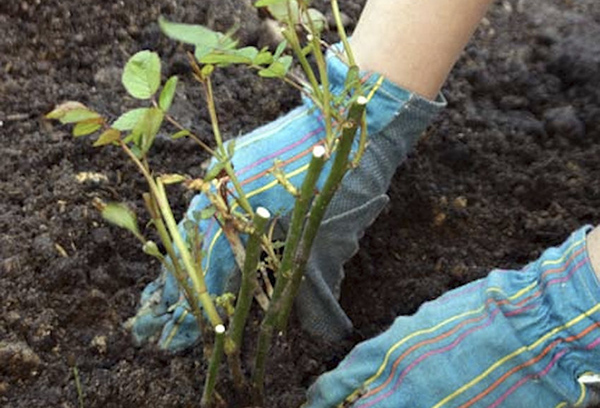
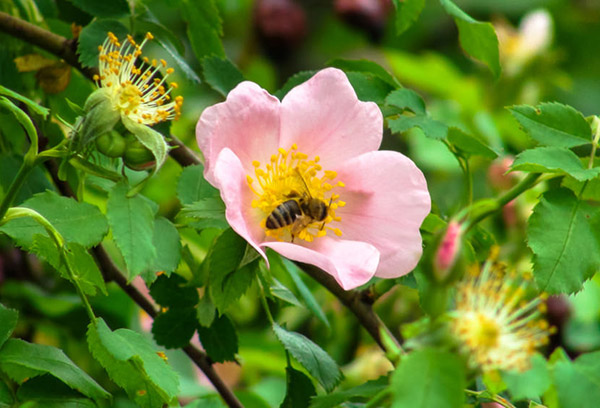
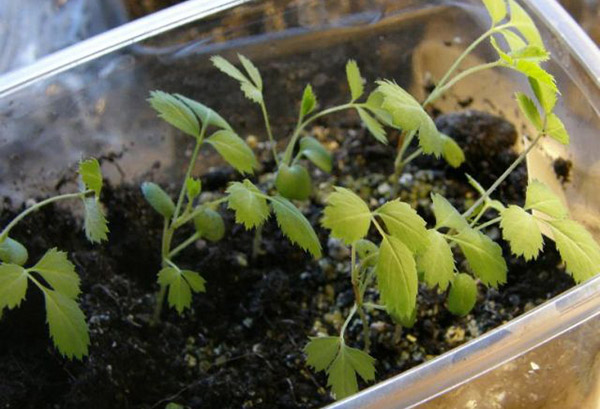



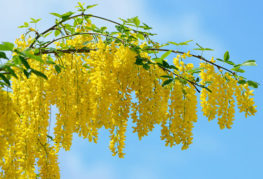
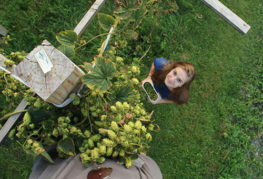
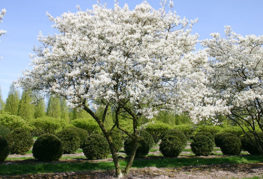

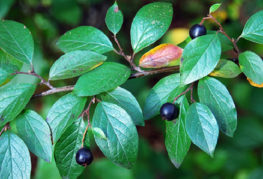
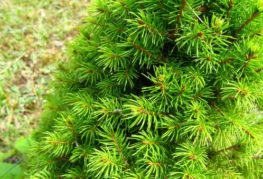
and will be published shortly.